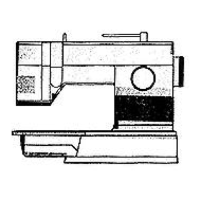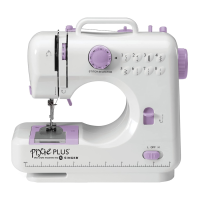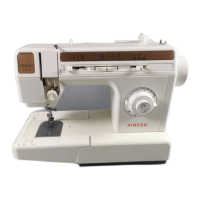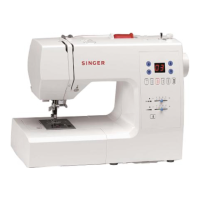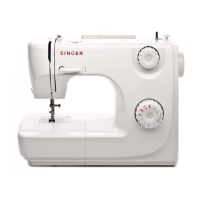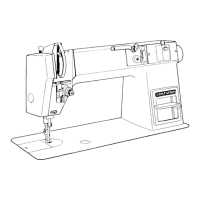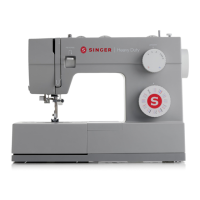6 – Introduction
English
Application
Straight Stitch
Center Position
The basic stitch used for sewing. The most common use for a straight stitch is to sew
two pieces of fabric together.
Straight Stitch
Left Position
For all types of sewing.
Straight Stretch
Stitch
Stronger than a regular straight stitch, on stretch knit fabrics, because it locks three times
— forward, backward and forward again. Use it to reinforce seams of sportswear and for
curved seams which take a lot of strain.
Stretch Stitch For seams in tricot and stretch fabrics.
Zigzag Stitch A very versatile stitch for decorative sewing, applique, attaching trims, and more.
Multi-Step
Zigzag Stitch
Finish seam allowances to prevent the fabric from unravelling. When seam nishing, the
smaller step of the stitches will help keep fabric more at than a regular zigzag. It can
also be used for mending tears and sewing elastic.
Reinforced Zig-
zag Stitch
For joining fabric edge to edge or decorative sewing.
Overlock Stitch Sew seam and overcast in one step. For medium and medium/heavy stretch fabrics.
Blind Hem
Stitch
F
Sew hems that are practically invisible from the right side of the fabric. It is used for
skirts, dresses, trousers, curtains, etc, made with non-stretch fabrics.
Stretch Blind
Hem Stitch
F
Sew hems that are practically invisible from the right side of the fabric. It is used for
garments and other projects made with stretch knit fabrics.
Slant Overedge
Stitch
Seam and overcast in one step. For medium and heavy stretch fabrics.
Stitch Overview
The stitches described in the below chart are utility stitches, used mainly for utility sewing.
The most frequently used stitches are printed next to the stitch selection buttons on the front of the machine (Stitch Menu 1). Those
stitches are selected by touching the corresponding button (if Menu 1 is active). Stitches on menu 1–3 are printed on the Stitch Charts
that can be pulled out at the bottom of the machine.
When sewing, use a thread tension between 3–5. Always test sew on a piece of scrap fabric, and adjust the tension if necessary.
Choosing Utility and Decorative Stitch Patterns
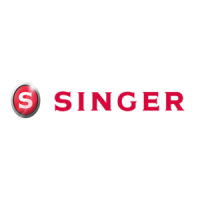
